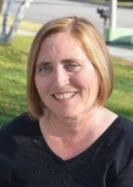Recommended for ages 8-12
With the relaunch of its Dear America series last year, Scholastic is not cutting corners, recruiting some of our most beloved writers for young people to add to this acclaimed historical fiction series for young people. This particular title, written by two-time Newbery winner Lois Lowry, chronicles the life of eleven-year-old Lydia Pierce in Portland, Maine of 1918, orphaned along with her brother by the deadly Spanish flu epidemic. Initially sent to live with relatives who can't afford to keep them, they are then sent to be raised in a Shaker community in Sabbathday Lake.
The adjustment to the world of the Shakers is difficult indeed. Because Lydia knows nothing of the Shakers, we learn along with her through about their customs and lifestyle. She is struck by her first view of their settlement: "It seemed to be a whole village, but quite small, and it was amazingly tidy. It made me think of a toy village, built for dolls." She was shocked to have her few meager possessions taken from her, told by one of the Shaker sisters that all that they had belonged to them all. She was equally surprised to be separated from her brother after learning that men and women's lives in the community are quite distinct; even though they consider themselves brethren and sisters, they don't converse, and have no physical contact. Because they don't marry, they take in orphans, who are free when grown up to go "into the world" or take vows to stay in the community. Even their language seems strange and old-fashioned to Lydia.
Although both she and her brother are struggling with their grief over the loss of their parents and baby sister, but her brother seems unusually withdrawn, and when he runs away, she can't help but worry about him.
But as the year passes, Lydia comes to admire and even love the kindly Shaker sisters, who teach her their beautiful handicrafts, songs, ways of worship, and finally, bring her a feeling of peace. Although the book encompasses only a year in Lydia's life, Lowry provides an afterword in which she tells us what became of Lydia and her brother Daniel. Did they stay with the Shakers or leave the religious life behind?
As is typical with this series, a historical note at the end of the novel provides invaluable context for young readers about both the outbreak of the Spanish flu epidemic and the history of the Shakers, including information on present-day Sabbathday Lake. We also learn that Lowry was inspired to write this title after buying an old farmhouse in southwest Maine, not far from the Sabbathday Lake community, where three Shakers remain in residence.
Unlike some other titles in the Dear America series, this novel is not action-packed; instead, it contains many details about the Shaker lifestyle and not a lot of action and conflict. The conflict in the story is more internal, dwelling on whether Lydia and Daniel can adapt their hearts to the Shaker ways. I found that its quiet style seems to fit with the Shaker theme, and the book should appeal to those children who like more contemplative stories as well as those who might be interested in learning more about different religions in our country.
Young people who would like to read additional books about the Shakers might consider:
Anna's World by Wim Coleman (Chiron, 2009): Takes place in a Shaker community in the 1840's.
Susannah, by Janet Hickman (Harper Trophy, 2000): Takes place in 1810 on the Ohio frontier.
Shaker Hearts, by Ann Warren Turner (David R. Godine, 2002): A picture book about the Shakers.
The Shakers: American Religious Experience, by Jean Kinney Williams (Franklin Watts, 1997): Examine the history, beliefs, and way of life of this religious group for grades 6 and up.
You can also view or recommend Ken Burns' documentary The Shakers. Filmed in 1989, it features not only historical footage but also interviews with some of the few remaining Shakers at that time.
Sabbathday Lake is the only active Shaker community still in existence, although various Shaker communities, including Sabbathday Lake, are now historic monuments, and can be toured by the public. Others include Canterbury Shaker Village in New Hampshire, Hancock Shaker Village in Massachusetts, and Shaker Village of Pleasant Hill in Kentucky. I visited Pleasant Hill myself over 20 years ago and found it fascinating.
To see a recent interview with Lois Lowry, check out Lee Wind's blog I'm Here, I'm Queer, What the Hell do I Read?
Disclosure: ARC provided by publisher.
Wednesday, January 12, 2011
Book Review: Like the Willow Tree: The Diary of Lydia Amelia Pierce (Dear America Series) by Lois Lowry (Scholastic, 2011)
Subscribe to:
Post Comments (Atom)





















1 comment:
I love the series so much but personally was disappointed in this book. While it took place over a year it just felt like Lydia had gotten over everything that happened to her in like a month. Just felt like that happened way too fast and didn't seem realistic to me. But I'm glad you enjoyed it more than I did.
Post a Comment